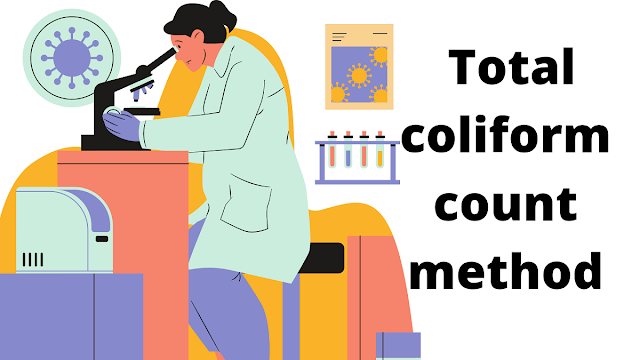The method determines the level of microbial contamination in water. Total bacteria count process water. Total coliform count method.
Principal of Total Bacteria Count: Water is added to an R2A agar specific for water samples. Following
incubation at 22°C over 5 nights, the number of colonies is counted. Three
alternative methods for routine analysis are acceptable.
{tocify} $title={Table of Contents}
3.
APPARATUS
3.1
Incubator at 22 ± 2°C
3.2
Autoclave
3.3 Sterile
pipettes 1 and 0.1ml
3.4 Sterile
Petri dishes (90mm diameter)
3.5 100 ml
sterile bottles and caps
3.6 2000ml
flask
3.7 Balance
3.8 Water
bath at 45-50°C
For
filtration method:
3.9 Sterile
filter holder
3.10 Sterile
membrane filters of maximum 0.45μm pore size
3.11 10ml
Sterile distilled or purified water.
3.12 Vacuum
flask
3.13 Vacuum
pump
Millipore
test kit method:
3.14
Millipore HPC100 25
4. REAGENTS
R2A Agar.
Oxide CM096 or equivalent. Prepare and sterilize according to the manufacturer's
instructions.
5. Procedure
5.1 Plate
count method
Aseptic
procedures are to be used throughout. Pipette 1.0ml of water sample into each of
two Petri dishes Pour 18-20 MLS of molten cooled agar (45-50°C) into each petri
dish and swirl the dish to mix and allow to solidify. Incubate the Petri
dishes inverted in the incubator at 22 ± 2°C over 5 nights. Examine the plates
for growth and count the number of colonies present.
If no
colonies are recovered record the results as 0 cfu/ml.
If the
number of colonies is between 1 and 300, calculate the average number of colonies
present on the two plates, and record the results as cfu/ml of sample.
If the
average number of colonies is more than 300, record the result as >300
cfu/ml
Note:
For infeed
and untreated waters where the counts may be expected to exceed 300 cfu/ml, use
0.1ml samples in place of 1.0ml and multiply the result by 10 to give the result
as cfu/ml.
5.2 Filtration method
Add 1 ml of
water sample to 10 ml of sterile water.
Filter all
11mls through the 0.45μm sterile membrane filter.
Aseptically
remove the filter from the filtration unit and place it on the R2A agar plate.
Incubate the
plate, without inverting, at 22°C ±2°C over 5 nights
Examine the
filter for growth and count the number of colonies present.
If no
colonies are recovered record the results as 0 cfu/ml.
If the
number of colonies is between 1 and 300 record the results as cfu/ml of
sample.
If the
average number of colonies is more than 300, record the result as >300
cfu/ml
Note:
For infeed
and untreated waters where the counts may be expected to exceed 300 cfu/ml, use
0.1ml samples in place of 1.0ml and multiply the result by 10 to give the result
as cfu/ml. For water supplies where the normal total count is less than 5
cfu/ml, the sample size may be increased to provide increased sensitivity.
5.3
Millipore Total Count sampler MHPC100 25 Use according to the supplier's
instructions. (This will automatically test a sample volume of 1ml.)
Incubate the
sampler, at 22°C ±2°C over 5 nights
Examine the
sampler for growth and count the number of colonies present.
If no
colonies are recovered record the results as 0 cfu/ml.
If the
number of colonies is between 1 and 300, and record the results as cfu/ml of sample.
If the
average number of colonies is more than 300, record the result as >300
cfu/ml
Note: For
infeed and untreated waters where the counts exceed 300 cfu/ml, this method is not
appropriate and either the plate count or filtration method must be used.
>Standard operating procedure for Laminar Airflow

